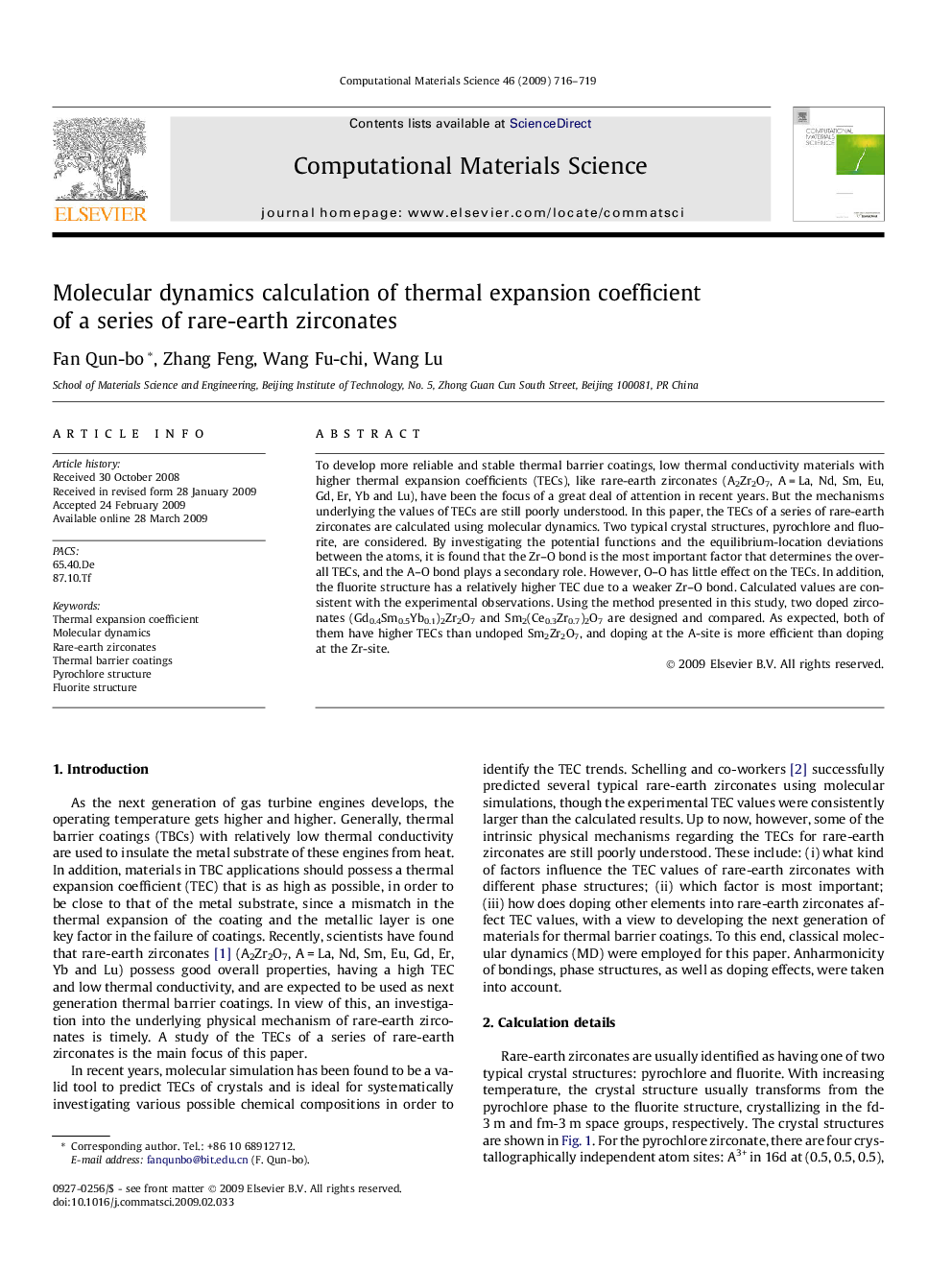| Article ID | Journal | Published Year | Pages | File Type |
|---|---|---|---|---|
| 1563103 | Computational Materials Science | 2009 | 4 Pages |
To develop more reliable and stable thermal barrier coatings, low thermal conductivity materials with higher thermal expansion coefficients (TECs), like rare-earth zirconates (A2Zr2O7, A = La, Nd, Sm, Eu, Gd, Er, Yb and Lu), have been the focus of a great deal of attention in recent years. But the mechanisms underlying the values of TECs are still poorly understood. In this paper, the TECs of a series of rare-earth zirconates are calculated using molecular dynamics. Two typical crystal structures, pyrochlore and fluorite, are considered. By investigating the potential functions and the equilibrium-location deviations between the atoms, it is found that the Zr–O bond is the most important factor that determines the overall TECs, and the A–O bond plays a secondary role. However, O–O has little effect on the TECs. In addition, the fluorite structure has a relatively higher TEC due to a weaker Zr–O bond. Calculated values are consistent with the experimental observations. Using the method presented in this study, two doped zirconates (Gd0.4Sm0.5Yb0.1)2Zr2O7 and Sm2(Ce0.3Zr0.7)2O7 are designed and compared. As expected, both of them have higher TECs than undoped Sm2Zr2O7, and doping at the A-site is more efficient than doping at the Zr-site.
